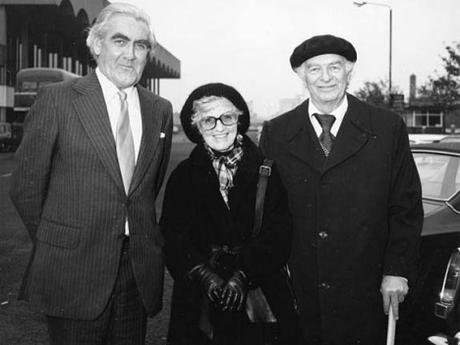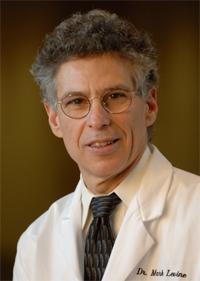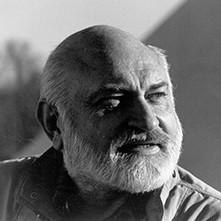
Jeanne Drisko
[Part 1 of 2]
Jeanne Drisko, MD, Director of Integrative Medicine at the University of Kansas Medical Center, Kansas City, was a featured speaker during the public session of the Linus Pauling Institute’s Diet and Optimum Health Conference, held September 13-16, 2017. She delivered a public lecture titled “Intravenous vitamin C and cancer treatment: Does it work?” Dr. Maret Traber, a principal investigator at LPI, introduced Drisko, describing her as a “leading expert on intravenous vitamin C.”
Drisko began her talk by tracing the history of vitamin C research, noting the ways in which previous studies had made her own research possible. The first person Drisko spoke of was Nobel laureate Albert Szent-Gyӧrgyi (1893-1986), who isolated ascorbic acid while working at Cambridge University and the Mayo Foundation between 1927 and 1930. Drisko then pointed out that, in the 1940s, vitamin C was used widely in clinical settings to treat pertussis, or whooping cough, along with other bacterial and viral infections. Importantly, these treatments were not administered orally. At the time, pharmaceutical preparations of vitamin C were not of a quality that could be administered intravenously, so they was injected into the muscles.
The use of vaccines was also on the rise during this period and Drisko pointed out that the development of the polio vaccine was particularly connected to the clinical fate of vitamin C. Albert Sabin (1906-1993), who had developed an oral polio vaccine, also carried out trials on the effects of vitamin C injections on primates. Sabin found no benefit and suggested that focus turn toward vaccines instead. It was at this point, Drisko explained, that the use of vitamin C injections went “underground,” drifting well outside of the medical mainstream.
One individual who remained interested in the promise of vitamin C was Frederick Klenner (1907-1984), who began using intravenous ascorbic acid at his North Carolina clinic in the 1940s. Drisko described Klenner as keeping “vitamin C use alive,” by administering both muscular and intravenous injections, while the broader medical community turned elsewhere. In particular, Klenner used vitamin C to treat children suffering from polio and found that even advanced cases could be approached successfully. During this time, Klenner also trained other practitioners in the methods that he was pioneering at his clinic.

Ewan Cameron, Ava Helen and Linus Pauling. Glasgow, Scotland, October 1976.
Next, Drisko turned to Linus Pauling. To begin, Drisko noted that since Pauling was already well known, his interest in oral vitamin C was written off by many who were familiar with his prior work. Others, however, did look to Pauling as an authority, and among them was the Scottish surgeon Ewan Cameron (1922-1991), who contacted Pauling after reading some of his papers in the early 1970s. In his initial correspondence, Cameron informed Pauling that he had been giving about ten grams of vitamin C to cancer patients and had observed that they tended to live longer. As a result of their shared interest, Pauling and Cameron decided to collaborate on a series of papers investigating the potential clinical import of large doses of vitamin C.
As they delved deeper into this work, Pauling became convinced of the need to carry out more rigorous trials. Lacking the funds to do so, he instead turned to the National Institutes of Health. Fatefully for Pauling, Charles Moertel (1927-1994), an oncologist at the Mayo Clinic who was eager to debunk the effectiveness of vitamin C, agreed to lead the NIH investigation. Specifically, Moertel carried out a double-blind placebo-controlled trial in which ten grams of vitamin C were administered orally, and he found no benefit. (He was not aware that Cameron had been injecting vitamin C intravenously.) Moertel published his results in the New England Journal of Medicine and the press picked it up. Once the negative conclusion had been widely circulated, subsequent mainstream interest in the medical application of vitamin C suffered a near fatal blow.

Mark Levine
Research on intravenous vitamin C began to re-emerge during the 1990s, led in part by NIH scientist Mark Levine. Levine’s nutrition experiments were novel, and did not emerge from the types of medical training that he could have been expected to received. For context, Drisko described her own education, wherein courses on nutrition were optional and held on Saturday mornings. She attended them because she was interested, but she also went along with the convention of the time; one emphasizing that nutrition was of lesser importance relative to other aspects of medical practice.
Levine, on the other hand, did not follow this line and decided to study vitamin C in depth. In the trials that he carried out at the National Institutes of Health, Levine tracked patients deprived of vitamin C and showed that they had indeed become vitamin C deficient. He followed this by administering oral doses of vitamin C, which demonstrated repletion. At the end of his trial, Levine also administered one gram of vitamin C intravenously. He was not allowed to administer a higher dose to his subjects, due to fears of toxicity, but it was his guess that ten gram doses would yield peak blood levels of vitamin C.
Ultimately, Levine demonstrated that oral vitamin C was not capable of yielding maximal vitamin C blood levels, because the body does not absorb oral doses well and excretes it very quickly. Intravenous administration, on the other hand, bypassed these metabolic processes, leading to higher blood levels. With Levine’s work in mind, Drisko summarized the difference between Cameron’s research and Moertel’s Mayo Clinic trial: “Cameron gave a drug and the Mayo Clinic gave a vitamin.”

Hugh Riordan
Drisko’s mentor, Hugh Riordan (1932-2005), was another individual responsible for keeping vitamin C research alive. The founder of what is now known as the Riordan Clinic in Wichita, Kansas, Riordan belonged to a group of orthomolecular physicians who saw vitamins as providing restoration of a healthy baseline in all humans.
After Levine published his paper on vitamin C absorption, Riordan went to visit him in Maryland to convince him to continue following this path of inquiry. The two ultimately collaborated on several case studies and welcomed others into their fold, a progression that helped incubate today’s group of researchers investigating the use of intravenous vitamin C.
As of 2016, the intravenous vitamin C group included Qi Chen, who works on basic research at the University of Kansas with Drisko; John Hoffer at McGill University, who explores the effects of high doses of vitamin C on cancer; Garry Buettner and Joseph Cullen at the University of Iowa, who looks at the redox capacity of vitamin C in patients undergoing radiation therapy; and Ramesh Natarajan at Virginia Commonwealth University, who is researching the use of vitamin C in the treatment of sepsis.
Drisko noted that there are differences in the lines of research followed within the current group. On the one hand, her cancer trials use megadoses of vitamin C at 75 to 100 grams. Natarajan, on the other hand, only uses 4 or 5 grams in the ICU for sepsis. For Drisko, these differences emphasize that there is still a lot of research to be done to understand exactly what is going on.
At present, attitudes toward vitamin C within the medical community can be mostly lumped into two categories. One is comprised of “early adopters,” as Drisko defines herself, who continue to carry out research to refine vitamin C treatments. The other consists of those who adhere more closely to the conclusions of the Moertel study, and who thus believe that claims supporting the effectiveness of vitamin C have been disproven. The distance between these two groups was characterized by Drisko as a “gulf of disapproval.”
However, current trends suggest that the gulf is being bridged. While some state medical boards still restrict the therapeutic use of vitamin C, Drisko and others have succeeded in garnering increasing levels of support from both colleagues and institutions. Shifts in funding opportunities are also beginning to emerge: though Drisko was unable to secure federal dollars for her work on ovarian cancer, the Gateway for Cancer Research non-profit stepped in to provide crucial support. With evidence of the efficacy of the treatment building from a growing number of trials, the possibility of obtaining federal grants is becoming more realistic. Likewise, drug companies are now looking at ways to patent vitamin C therapy, and some vitamin C treatment patients have succeeded in receiving reimbursement from their insurance companies.
Next week, we will provide an overview of the science underlying this renewal in optimism about the potential to fight disease with intravenous ascorbic acid.
Advertisements